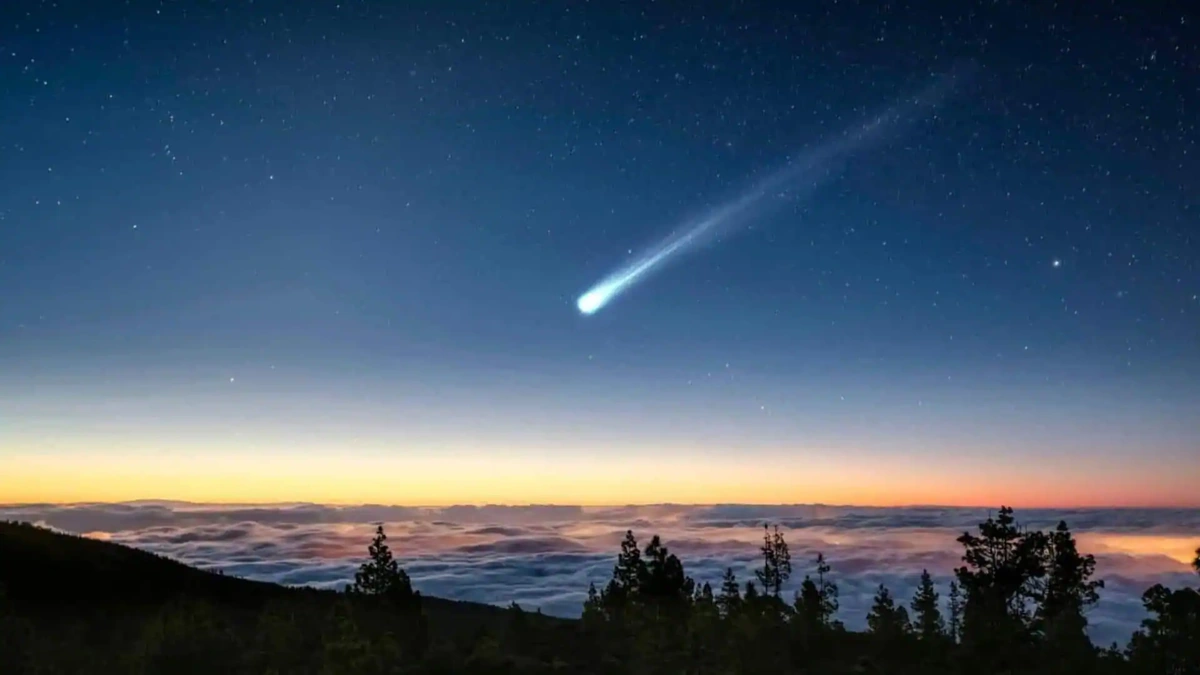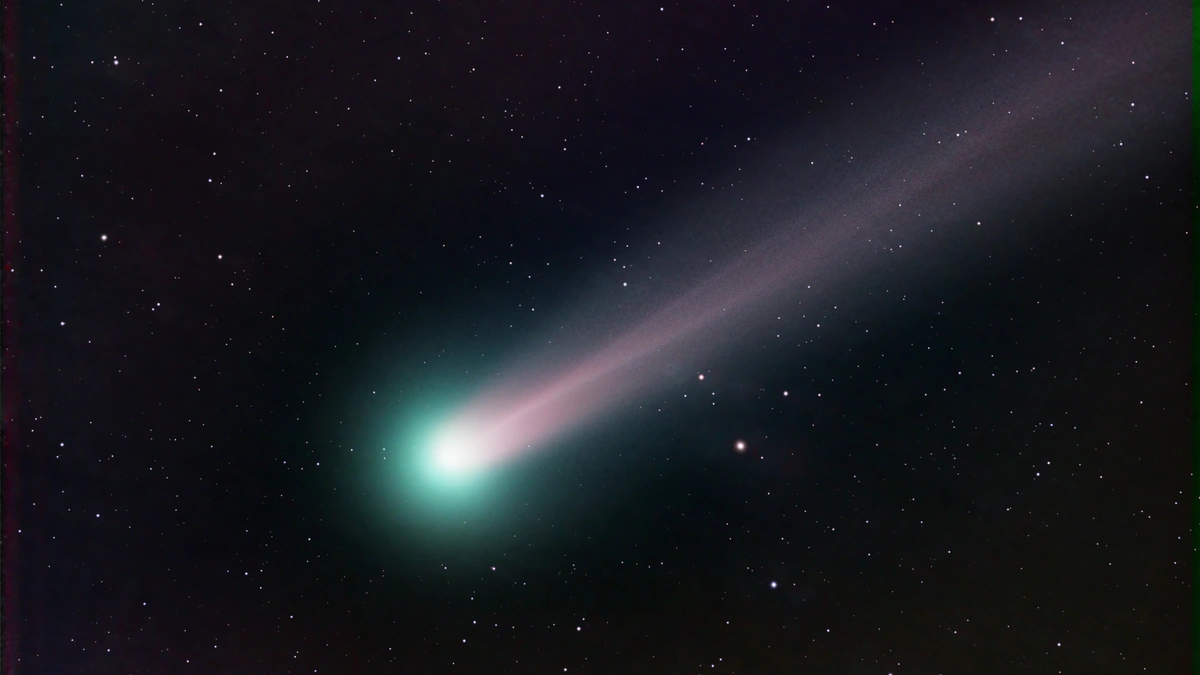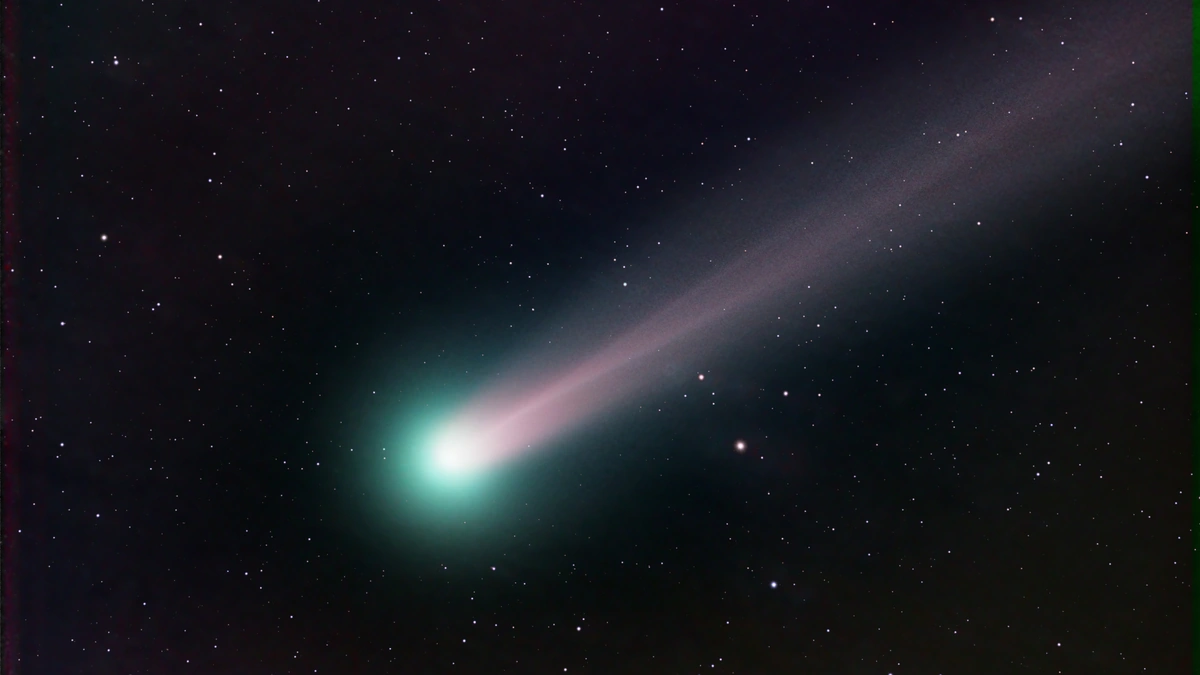Rare Green Comets Visible in Night Sky This Month
Have you ever looked up at the night sky and felt a sense of wonder? This month, that feeling might be even stronger. Something truly special is happening: rare green comets are making an appearance. But before you grab your telescope (or just your phone), let’s dive into why this is such a big deal. Not just for astronomers, but for anyone who’s ever felt a connection to the cosmos.
I initially thought, “Okay, another comet sighting.” But then I realized, this isn’t just about spotting a ball of ice and dust. It’s about understanding our place in the universe, and seeing a piece of cosmic history light up the night. Let me rephrase that for clarity – this is about witnessing something incredibly rare and beautiful!
Why Green Comets Are Rare and Special

Here’s the thing: most comets don’t appear green. The green color is due to the presence of diatomic carbon (C2) in the comet’s coma – that’s the fuzzy atmosphere surrounding the nucleus. When sunlight interacts with this gas, it emits a vibrant green glow. It’s beautiful, mesmerizing, and relatively short-lived.
But, why don’t we see this green glow more often? Well, the diatomic carbon is quickly broken down by sunlight as the comet gets closer to the sun. So, we only get to see this green hue when the conditions are just right. Think of it like catching a glimpse of a firefly on a summer night – fleeting and magical. The appearance of these comets also provides scientists with a fantastic opportunity to study the composition and behavior of comets up close.
The rarity also comes from our viewing perspective. Not all comets pass close enough to Earth for us to see them with the naked eye, or even with binoculars. This makes this month’s sighting even more remarkable. And let’s be honest – who doesn’t want to see a green comet?
How to Spot the Green Comet
Okay, so you’re excited. Now, how do you actually see this thing? First, you’ll need to find a dark location, away from city lights. Light pollution can make it incredibly difficult to spot faint objects in the night sky. The farther you get from urban areas, the better your chances.
Next, check the comet’s trajectory . Websites like Space.com and astronomy apps can provide detailed information about where to look in the sky. Remember to give your eyes time to adjust to the darkness – about 20-30 minutes. This will significantly improve your night vision. A common mistake I see people make is not allowing enough time for their eyes to adjust.
Binoculars will definitely help, especially if the comet is faint. A small telescope will give you an even better view, allowing you to see more details in the comet’s coma and tail. And the one thing you absolutely must double-check is the weather forecast. Clear skies are essential! Don’t forget a thermos of chai to keep you warm during those late-night observations!
The Science Behind Comets and Their Tails
What fascinates me is the science behind these cosmic snowballs. Comets are essentially leftovers from the formation of our solar system, dating back billions of years. They’re composed of ice, dust, and frozen gases. As a comet approaches the sun, the heat causes these materials to vaporize, creating the coma and tail that we see.
But here’s where it gets interesting. A comet’s tail actually consists of two parts: a dust tail and an ion tail. The dust tail is made up of small particles pushed away from the comet by sunlight. The ion tail, on the other hand, is composed of ionized gases that are affected by the solar wind – a stream of charged particles emitted by the sun. This is why the ion tail always points directly away from the sun, regardless of the comet’s direction of travel.
The composition of the comet, especially the gases that sublimate, gives rise to different colors. The green we’re seeing is fairly rare, and it speaks to the specific chemical makeup of this particular icy body, the nucleus .
Comets in Culture and History
But comets aren’t just fascinating from a scientific perspective. They’ve also played a significant role in human culture and history. Throughout the ages, comets have been seen as omens – sometimes good, sometimes bad. In many cultures, they were believed to herald significant events, such as the birth of a king or the outbreak of a war.
Halley’s Comet, for example, has been observed for centuries and is depicted in the Bayeux Tapestry, which commemorates the Norman conquest of England in 1066. The appearance of Halley’s Comet was seen as a sign of impending doom by some, while others viewed it as a symbol of change and renewal.
Even today, comets continue to capture our imagination. They remind us of the vastness and mystery of the universe, and our place within it. And, they can be beautiful!
A Once-in-a-Lifetime Opportunity?
So, are these green comets a once-in-a-lifetime opportunity? It’s hard to say for sure. Comet orbits can be unpredictable, and it’s difficult to know when another green comet will pass close enough to Earth for us to see it. But one thing is certain: this month’s sighting is a chance to witness something truly extraordinary. Don’t miss it! The visibility of comets is something people keep track of for years, so enjoy it!
Get out there, find a dark spot, and look up. You might just see a piece of cosmic history streaking across the sky. And when you do, remember that you’re not just seeing a comet – you’re seeing a connection to the universe, and to all those who have looked up at the night sky in wonder before you.
The last thing to consider is that this event, the appearance of a green comet, provides an incredible opportunity to discuss topics such as light pollution, space exploration, and the history of science with friends and family. Share the wonder!
FAQ About Green Comets
Will I need special equipment to see the comet?
While you might be able to see it with the naked eye under very dark skies, binoculars or a small telescope will greatly improve your chances.
What time of night is best to view the comet?
The best time to view the comet’s location is typically a few hours after sunset or before sunrise, when the sky is darkest.
What if the weather is cloudy?
Unfortunately, cloudy weather will obscure your view. Keep an eye on the forecast and try to find a night with clear skies.
Are green comets dangerous?
No, these comets pose no danger to Earth. They are simply icy bodies that are passing through our solar system.
How long will the comet be visible?
The comet’s visibility will depend on its brightness and trajectory, but it’s likely to be visible for several weeks this month.
Where can I find more information about comets?
You can find lots more information on astronomy websites and in science books.













